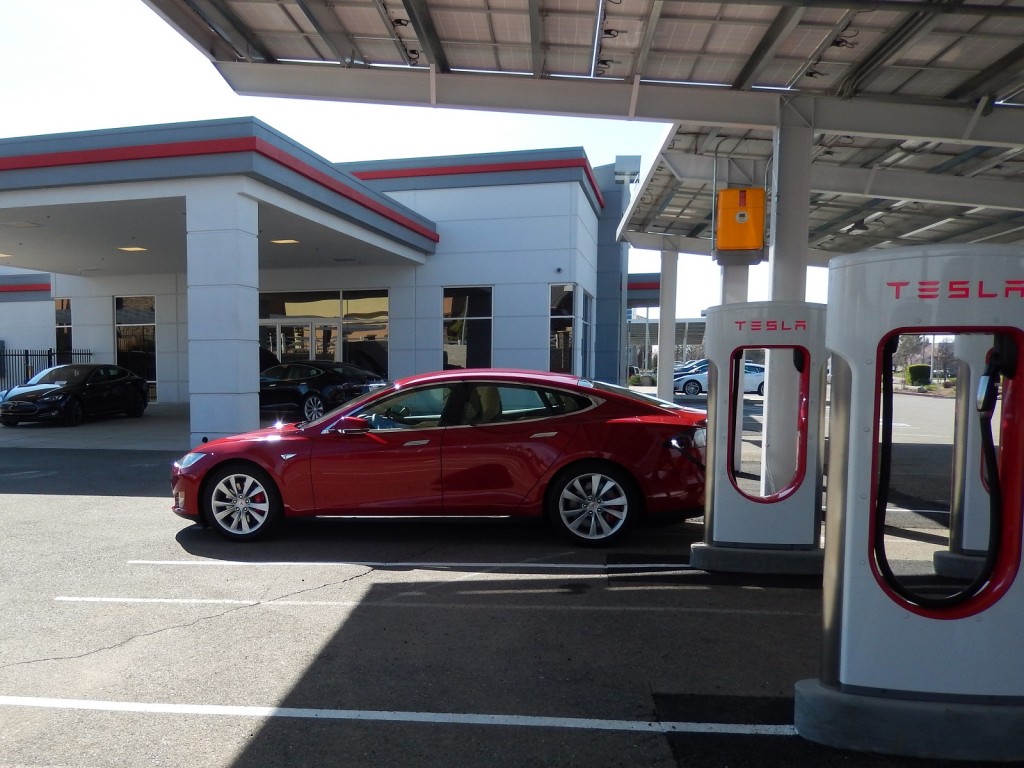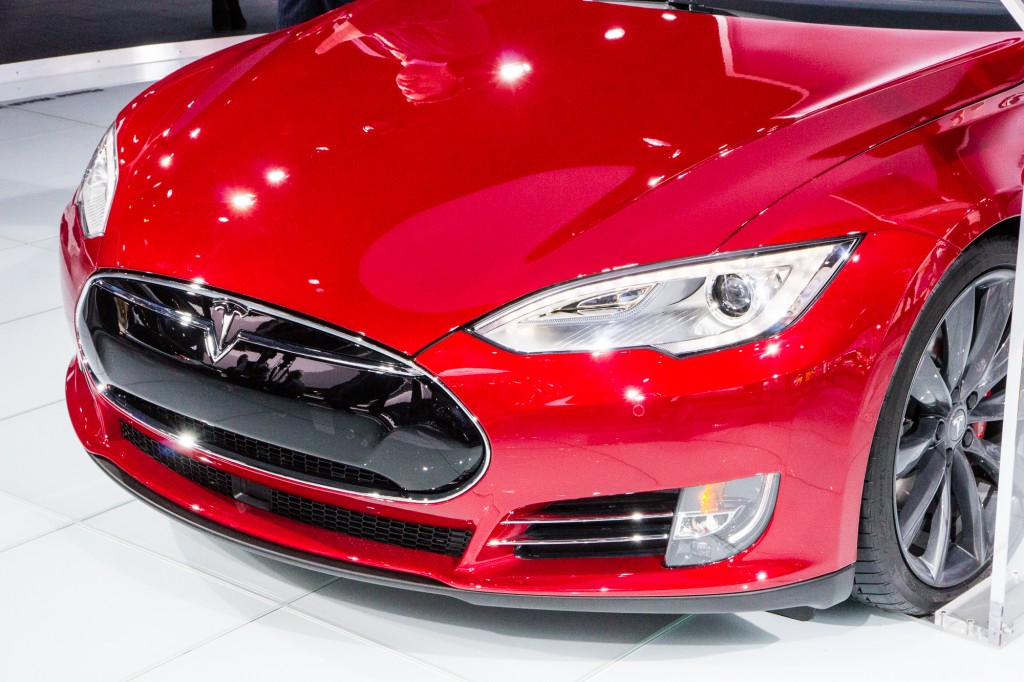Even 10 years ago, the idea of a “family sedan” that could accelerate from 0 to 60 mph in less than 4 seconds was something between a rarity and a fantasy.
Even more delusional was the thought of a stock family sedan that could exceed 200 mph.
Those heady performance figures were traditionally the territory of extremely expensive sports cars and exotics--but has Tesla invaded this turf with its highest-performance Model S electric luxury sedan, the P85D.
DON'T MISS: Why I Had To Trade My Tesla Model S For A Brand-New P85D
The challenge of a fast 0-to-60-mph time depends on three factors: the weight of the vehicle, the torque and power of its motor(s) or engine, and traction--or the ability to get that power to the road without spinning the tires uselessly.
Today's horsepower champion among so-called family sedans is the 2015 Dodge Charger Hellcat, with an advertised 707 hp. But only its rear wheels are powered, so it doesn't have the real off-the-line grip to use all that power most efficiently.
It is also weighs at around 4600 pounds; the combination delivers a very loud 0-to-60-mph acceleration time of 3.7 seconds on stock tires, with a listed to speed of 204 mph--despite a drag coefficient of around 0.35.

2015 Tesla Model S P85D Supercharging in Rocklin, California, Feb 2015
At full throttle, this raw beast sucks fuel at 1.5 gallons per minute--and will run its tank dry in around 13 minutes. (Range anxiety, anyone?)
Three of the most powerful European luxury vehicles--the Audi RS7, Bentley Continental GT, and Mercedes-Benz E63 AMG--each have all-wheel-drive, to allow their gasoline engines (rated from 550 to 577 hp) to get all their power to the pavement.
Each can deliver a 0-to-60-mph time of less than 4 seconds and a top speed of more than 180 mph when fully at song. The fastest of these monsters, the Bentley Continental GT, claims a top end of 198 mph.
ALSO SEE: Tesla Model S P85D 'Insane' Mode: NSFW Video Shows How Fast It Really Is
These classic power demons appear to be limited in top speed by a lack of aerodynamic efficiency, since their claimed drag coefficients are in around 0.33 to 0.35 and each has frontal area of around 25 to 28 square feet.
They also weigh more than 4000 pounds, limiting performance.
Enter the P85D
In terms of weight, the Tesla Model S P85D is the heaviest, at just a shade under 5000 pounds, representing a theoretical drawback for its 0-60 performance.
![Tesla Model S P85D 'Insane' mode acceleration [frame capture from DragTimes video] Tesla Model S P85D 'Insane' mode acceleration [frame capture from DragTimes video]](https://images.hgmsites.net/lrg/tesla-model-s-p85d-insane-mode-acceleration-frame-capture-from-dragtimes-video_100498651_l.jpg)
Tesla Model S P85D 'Insane' mode acceleration [frame capture from DragTimes video]
As for traction, it has all wheel drive and near 50-50 weight distribution, both pluses for getting all its power to the road surface.
It also has perhaps the best traction control of any of these vehicles, modulating the power delivered by each of its two motors (front and rear) to ensure it always delivers full power to the pavement.
MORE: 2014 Tesla Model S P85D: First Drive Of All-Electric AWD Performance Sedan
The P85D also has more power than any of the Europeans, at a combined 691 hp. It may well also have more torque delivered to the wheel, as the slightly more powerful Charger Hellcat has its output measured at the flywheel, not at the wheels.
Lowest drag by far
Because the P85D dispenses entirely with a transmission--against the eight-speed automatic the Hellcat must use to match its peaky engine power to road speed--its powertrain is more direct, and so will have fewer losses between engine or motor output and the ground.
Then there's drag; the Model S P85D has a confirmed drag coefficient of 0.24, a fundamental advantage at higher speeds.

Tesla Model S P85D, 2015 Detroit Auto Show
So, which sedan has the fastest 0-to-60-mph time? The answer is abundantly clear: The P85D will smoke any of these other super sedans running on standard street tires.
All the more impressive that it's an electric car, from a maker barely 10 years old.
About top speed...
Both the Dodge Charger Hellcat and the 552-hp Aston Martin Rapide max out at 203 or 204 mph.
With far lower drag, far more power, the P85D ought to be able to top 210 mph--if CEO Elon Musk would let his engineers remove the speed limiter.
![2015 Tesla Model S P85D [photo: owner George Parrott] 2015 Tesla Model S P85D [photo: owner George Parrott]](https://images.hgmsites.net/lrg/2015-tesla-model-s-p85d-photo-owner-george-parrott_100499666_l.jpg)
2015 Tesla Model S P85D [photo: owner George Parrott]
Given the relative energy densities of lithium-ion batteries versus gasoline (hint: gasoline's much higher), even a fully charged P85D might deliver only one or two top-speed runs.
RELATED: Tesla Model X Caught On Video In Acceleration, Cornering Tests
But, of course, virtually nobody ever really drives a car to these extremes.
Still, top speed remains a major bragging factor in the sale of high-end cars.
Not to mention that thousands of P85D owners really crave the bragging rights that such a statistic would offer them.
So, Mr. Musk: Take off the speed governor completely, at least on the P85D, and let's see what the car can do!
_________________________________________________












